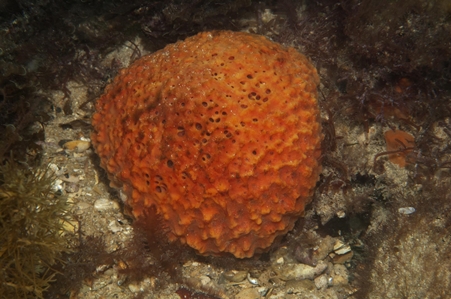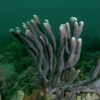General Description
An orange sponge species with spherical form. Size of about 5 cm.
Biology
Sponges in the genus Tethya often exhibit budding propagules, a form of asexual reproduction whereby the parent sponge produces a stalk of spicules at its surface, terminating in a bud that detaches and floats away to become a separate individual. Almost a third of the world's known species of Tethya occur in Australia with 15 species found in southern Australia. This is the only genus of this family group to be found in Australian waters, the other species are in tropical areas and have been recorded up to depths of 2000 m.
Habitat
Reef and jetty areas, at depths of 3-30 m.
Sponge gardens
Reefs
Distribution guide
Victoria.
Species Group
Depth
Water Column
Max Size
5 cm
Diet
Plankton or particles
Commercial Species
No
Global Dispersal
Recorded in Australia
Species Code
sp. MoV 6666
Identify
Conservation Status
- DSE Advisory List : Not listed
- EPBC Act 1999 : Not listed
- IUCN Red List : Not listed




